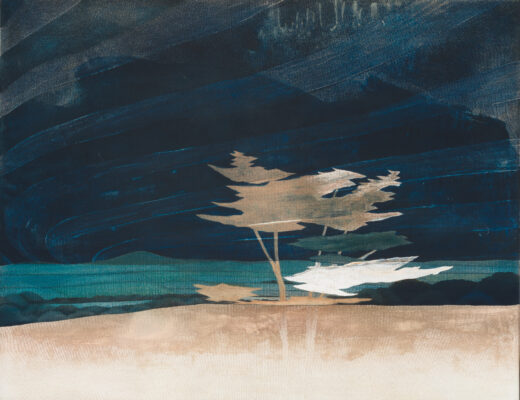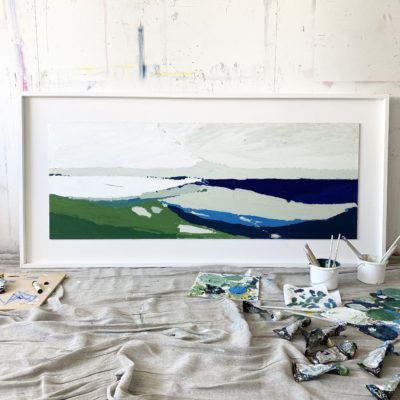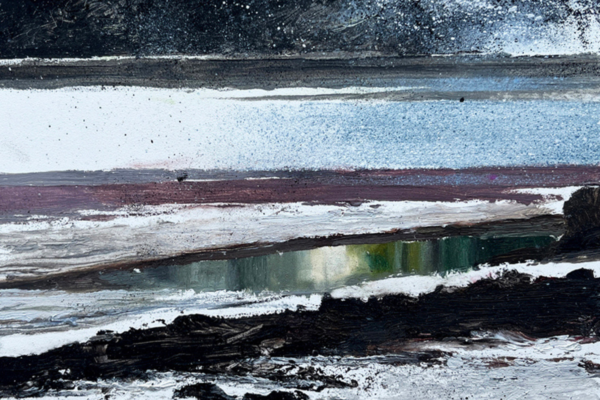Course details
Work from both seasonal and exotic flowers to establish a confident approach to working with oils, creating still life paintings that luxuriate in the richness of paint, colour and texture.

Nothing quite compares with the luscious possibility of working with oil paint, but it can be a daunting medium. Following in the seasoned footsteps of tutor Gary Long and working from a subject that has transfixed artists for centuries: a combination of seasonal and exotic flowers, this course equips you with a practical approach to painting flowers in oils. Small classes allow for plenty of interaction with your tutor, who also works on a piece alongside the group. This reveals the architecture of expressive still life painting, letting you in on the secrets of creating a successful painting.
You’ll start with a compositional drawing in charcoal, giving you a feeling for the tonal values. From your charcoal study, move to working with gouache, incorporating colour and a flush of confidence into your painting. This approach drives away the apprehension of beginning an oil painting and draws out your intuitive knowledge.
You will build your colour palette, learning to unearth the right tones and to create a dialogue between them. This gives you a solid support system for working in oils, bringing depth to your painting. Working on both board and canvas; using brushes and experimenting with palette knives, reveal the possibilities of expressive mark making. The three days will establish the practical approach you need to feel confident working independently with oils, creating still lifes that luxuriate in the richness of paint, movement and texture.
Day to day plan
This is a rough indication of what to expect over the course. However sometimes the structure of the days may alter depending on the nature of the group and weather.
Day 1
Introduction. Gary will show the group some of his own pieces. You will then choose a display of flowers and begin with charcoal studies. You’ll incorporate gouache, with Gary demonstrating expressive and experimental painting techniques.
Day 2
Gary will share some information on colour and techniques for laying out a palette. You will then begin to paint on board in oils, using your charcoal and gouache studies as references.
Day 3
Start on a new composition, this time on canvas. You may find it beneficial to work on a tonal drawing before starting. Gary will introduce you to mediums such as impasto paste, which you can use to create texture in your painting, creating gestural forms without losing the intensity of your colour.
What will I learn?
- Learn to sharpen your observation when it comes to working from still life.
- Understand tonal values and how to convey these in different media.
- Build confidence to experiment with gouache as a way into oil painting and a reference point throughout the process of making work.
- Build confidence in colour mixing and develop your understanding of how colours interact in a piece.
- Learn to create texture in oil paintings using different tools and media.
Who would this course suit?
This course is a wonderful starting point to build your confidence working with oil paints and to develop a more expressive and gestural still life style. With its structured and practical approach, it is ideal for anyone looking for a better understanding of composition, colour and the physical properties of oil paint and is suitable for complete beginners as well as those with a little more experience.
Taught by
What to Bring
Our studios are fully equipped and we provide you with all the materials you need for your course. However, if you have a favourite set of brushes or any specialist materials that you would prefer to use, please bring them with you.
Our studios are fully equipped and we provide you with all the materials you need for your course. However, if you have a favourite set of brushes or any specialist materials that you would prefer to use, please bring them with you.
Timings and Breaks
The first day starts at 10am and finishes at 4.30pm, please aim to arrive ten to fifteen minutes before the start time.
All course days after that start at 9.30am and finish at 3.30 on Sunday after a short lunch break to try an enable people to get home that day.
There are plenty of nearby places to eat and we will serve tea and coffee at break times during the day.
FAQs
Studio Courses
How can I get help in choosing a course?
Our friendly expert staff are always happy to discuss your needs and our courses in more detail to help you with your decision. Please call us on 01736 797180
How do I get my work home?
Tutors have special techniques for transporting oil paintings and the school has plastic folders available in our shop for £3.50 or do bring a portfolio.
For international students we are happy to arrange transportation of your work back home.
What do I need to bring?
Absolutely nothing! All materials and aprons are provided although some people do like to bring their own set of brushes.
What do I do for lunch?
Courses allow an hour’s break for lunch and there are numerous places nearby or you are welcome to bring a packed lunch into the studio.
What times do courses run?
Most of our courses start at 10am and end at 4.30pm on the first day. Subsequent days we start at 9.30am ending at 4pm.
Weekend Courses run 10am – 4pm on the first day but the final day starts at 9.30 and ends at 3.30 with a short lunch break to enable people to get home that evening.
Do you have to be experienced to come to the School?
The School is a very friendly and welcoming place for all ages and experience. Our drop-in life classes and August half-day workshops are ideal for those wanting to have a go for the first time. Most of our longer courses are also fine for novices.
If any of the courses do need a bit of experience we flag this up in the brochure and on the website.
Booking a Course
How can I reserve a place?
We will hold a provisional reservation for 24 hours if you give us a call whilst you find accommodation. Otherwise please book online or by telephone 01736 797180.
You can reserve a place with a £100 deposit; balance is due 12 weeks before course start date.
About St Ives
Where do I park?
The nearest long stay public car parks are the Island and Barnoon Long Stay Car Park, both a 5 minute walk away. In the peak summer months it may be easier to park at Trenwith Car Park by the leisure centre and walk down into town. If you don’t fancy the walk up the hill at the end of the day there is a shuttle bus which runs from outside the cinema.
How do I get there?
Public Transport: If you are coming from further afield the main train line runs into St Erth which is a 15 min taxi ride away or you can take the St Ives Bay Line which runs approx. every 30 minutes. The School is a 10 minute walk from St Ives station.
Driving: M5 will take you to Exeter where we recommend that you take the A30 across Bodmin Moor and into Cornwall. After passing Hayle, leave the A30 at St Erth roundabout for St Ives. Turn right at the second roundabout. This road will take you through Lelant and Carbis Bay into St Ives.
Where can I stay?
St Ives has a huge selection of hotels, guest houses and self catering accommodation to choose from. Please browse the art holidays St Ives section on our website and give us a call if you would like any help.








